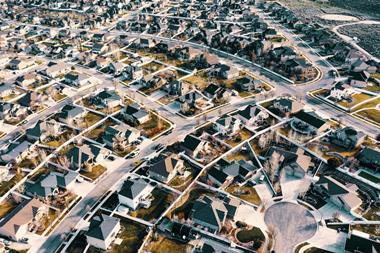With billions of euros worth of assets expected to come to the market in the next decade due to closed-ended fund liquidations, opportunities for private debt funds are set to increase, according to European real estate investor association INREV.
The latest quarterly INREV Consensus Indicator Survey shows that more investors are turning to alternative lenders for financing – from 29.1% in Q1 2023 to 34.6% in Q3.
Iryna Pylypchuk, INREV director of research and market information, said: “At times of change, there are always opportunities, and it looks like non-listed real estate debt funds are proactively accessing this timely opportunity to step up.
“The evident growth of non-listed debt funds increases diversity of lending sources and promotes healthy competition in the European non-listed real estate lending market. In turn, it should also bring more stability.”
INREV estimates that the absolute level of debt in European non-listed real estate market has increased from €45bn in Q3 2009 to €67bn today.
“With traditional lenders maintaining caution as stricter banking regulations limit their lending capacity, and high regulatory capital requirements make operations more expensive, there is increased room for European debt funds,” the association said.
INREV’s analysis found that current market conditions, combined with the higher cost of debt and higher interest rates have made the lending landscape more complex.
According to the INREV Asset Level Index debt service coverage ratios (DSCR) have experienced “a notable decrease” from their peak. In 2021, the average DSCR stood at 9.67, with the rental income 9.67 times higher than the debt servicing payments. This dropped to 5.11 in 2022, and to 3.17 at the beginning of 2023.
While it is not a comprehensive view of the market, it is a clear illustration of the impact, INREV said.
However, INREV’s research offers some reassurance to markets. It found that the average leverage in the non-listed European market is much lower than levels seen during the global financial crisis (GFC), with the average level of gearing in both core and value-add real estate funds dropping to historic lows – falling to 22.2% and 38.52% in the first half of 2023, respectively. This is well below their equivalent post-GFC peaks of 57.1% and 39.7%, INREV added.
The organisation also pointed to evidence from the NCREIF/CREFC Open End Debt Aggregate index, which showed that the correlation between US real estate debt and core real estate returns in the US was low to moderate.
“This indicates that private real estate debt and private real estate equity strategies are complementary, which is also likely true for the same components across the European market,” INREV said.
To read the latest IPE Real Assets magazine click here.


















